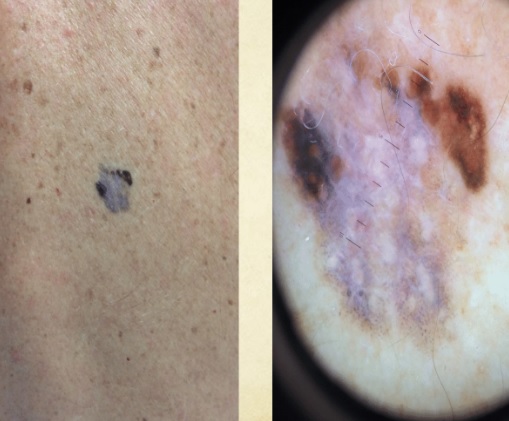Melanoma – Prevention, Identification & Treatments
With Dr Paddy Mclisky
BY TRACEY HORDERN
Australia and New Zealand have the highest rates of melanoma in the world, with approximately 16,000 people diagnosed with melanoma in Australia. Melanoma is the second most common cancer in men and the third most common cancer in women.*
What is Melanoma?
Melanoma is a form of cancer that develops in the skin’s pigment cells – known as melanocytes. These melanocyte cells produce melanin that helps to protect the skin from the sun’s ultraviolet (UV) radiation. When we are children and young adults, these melanocyte cells can often bond together in the skin to form a mole.
While most moles are safe, sometimes the melanocytes in a mole begin to grow and divide in an uncontrolled way. If they start to grow in an unusual way, either expanding outwards or down into the lower layers of the skin, this is when they can become a melanoma.
Of all the forms of skin cancers, melanoma is the most serious form. Melanomas can grow very quickly if left untreated. A melanoma can spread to the lower dermis of your skin, then enter the lymphatic system or the bloodstream and then spread to other parts of the body such as your lungs, liver, brain or bone.
But it’s not all bad news, the good news is melanomas can be prevented in the first place – and if a melanoma is detected early, it can be effectively treated. Below is some first-hand knowledge from First Light Healthcare’s Dr Paddy Mclisky.

CAPTION:
A fellow of the Royal Australia College of General Practitioners, Dr Paddy Mclisky has a passion for the prevention and treatments of melanomas and holds Advanced Certificates in Skin Cancer Medicine/Surgery and Dermascopy.
Prevention, Identification and Treatments of Melanoma with Dr Paddy Mclisky
Q. How Does Melanoma Spread?
A. Melanoma usually starts out in the superficial layers of the skin (the epidermis). It often grows wider for a period and then begins to grow thick (deeper). When the melanoma grows into the deeper part of the skin (the dermis) it has access to blood vessels and lymphatic vessels and thus the potential to spread. We call these melanomas ‘invasive’. If melanoma gets into the blood or lymphatics, it may be able to survive and be transported to another part of the body. This is called metastasis. If metastasis occurs, we are currently unable to ‘cure’ the melanoma, but we have promising new therapies which can control the disease in some people.
Q. Are Melanomas Painful?
A. Usually not. There are often no symptoms, but painful, itching, changing, rapidly growing or a bleeding mole should be reviewed by a doctor. Moles do grow gradually in children and young adults and this can be normal.
[Insert Dr Paddy Mclisky’s personal photos of a patient’s melanoma HERE]

Caption: Found on the back of a young man during a routine skin check. This spot is Asymmetrical, has an irregular Border, multiple Colours, Diameter >6mm. (The ABC of melanoma). It was almost certainly Evolving but the patient wouldn’t have known that because it was on his back.”
– Dr Paddy Mclisky.
Q. Are Melanomas Raised or Flat?
A. They can be raised or flat. Any strange or changing spot on the skin which is raised should be checked as soon as possible, because a spot which is growing upwards (raised) may also be growing downwards (deeper into the skin where it can access blood vessels). Melanomas which feel flat may also be growing deep, hence we recommend getting any concerning skin spots checked promptly.
Q. Can Melanoma be Benign?
A. Melanoma by definition is a malignant cancer. Moles are benign. Sometimes unusual/funny looking moles are monitored or removed by doctors, to exclude melanoma. It can be difficult to tell the difference without removing the mole for review under a microscope by a Pathologist.
Q. Can Melanoma Kill You?
A. Melanoma kills around 1400 people in Australia every year. Motor vehicle accidents in Australia claim around 1100 lives annually, which puts this number in perspective.
Fortunately, most people who have a melanoma diagnosed will survive. Early diagnosis gives an excellent survival rate. When melanoma is diagnosed late, the chance of death is significantly higher.
Q. Can Melanoma be Cured?
A. Melanoma is most often cured with surgical excision. Other treatments which can sometimes cure melanoma include radiation therapy and immunotherapy/chemotherapy. The latter treatments have traditionally been used for more advanced melanoma and therefore are usually intended to control disease rather than ‘curing’ it.
Q. Can Melanoma Make You Feel Tired?
A. Metastatic cancer (cancer which has spread through the body) of any sort can cause tiredness. This is NOT the most common cause of tiredness, which is often due to unhealthy lifestyle, poor sleep, stress, alcohol consumption, mood disorders or iron deficiency. Before melanoma has spread, it should not cause tiredness.
Q. Can Melanoma Appear in One Day?
A. Theoretically, melanoma grows from a tiny size and will become visible at some point. Most often, people report they have noticed a spot over recent weeks or months. Early detection is key to curing melanoma, so it is ideal to see a doctor immediately if you notice an unusual or changing spot. Regular skin checks for individuals at risk is another great way to pick up skin cancer in its early stages.
Source:
*https://www.melanoma.org.au/understanding-melanoma/what-is-melanoma/



